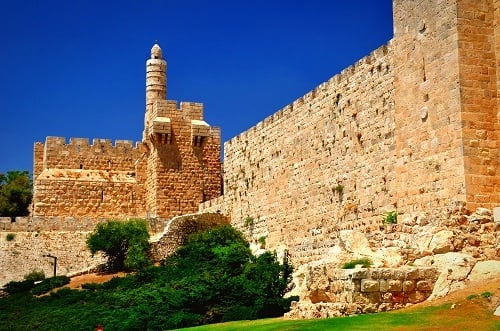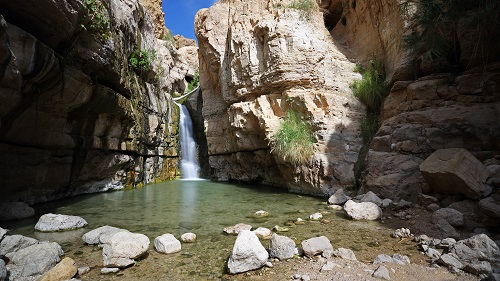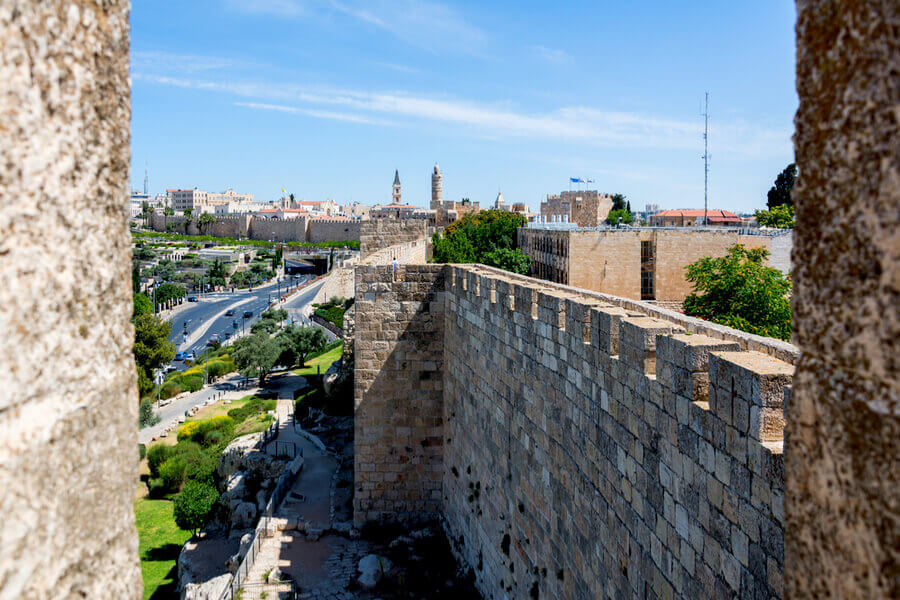Tel Aviv With Kids: 9 Family Summer Attractions
Think that Tel Aviv's all about nightlife? Well. whilst it does have a reputation for being a 24/7 destination, the good news is that there’s plenty to do if you like to wake early and sleep early.The fact is that whilst everyone seems to know that Tel Aviv’s a serious party city, as well as the endless galleries, museums, boutique stores, and top restaurants, Tel Aviv is also a great place to bring kids on holiday.Taking a Family Holiday in Tel AvivSomething that you’ll notice quite quickly on arrival in this city is just how child and family-friendly it is. Like many Mediterranean cities, children are welcome everywhere - family is everything both in Jewish and Muslim culture here, and not only are children welcome, but they’re adored.Take the family to Israel and you won't be sorryIn the last twenty years, also, there’s been a lot of investment spearheaded by the city Mayor - more green spaces, better transport, a whole new promenade, and playgrounds everywhere. Cafes, restaurants, and public spaces are all child-friendly, and because it’s such an easy city to walk around (it’s flat) or cycle in (there are bike lanes everywhere) you don’t even need a car to get between places.Children's Activities in Tel AvivSo what is there to do for children in Tel Aviv? Here are a few of the activities we think your kids will adore:1. Ramat Gan SafariSee Africa in Tel Aviv! The fantastic Ramat Gan Safari (the largest of its kind in the Middle East) is the perfect day out for kids because there’s so much to see there.Come and see the Ramat Gan Lions! Divided into three parts, in the first area, you’ll see animals roaming freely from your car (or zoo bus). The second area is an actual zoo, with petting areas for young kids and the last is the lion enclosure. You could bring a picnic and make a day of it.2. Meymadion Water ParkThe largest water park in Israel, stretching over 25 acres, Meymadion is a fabulous place to spend a day. In the heart of Tel Aviv, Ganei Yehoshua, has all kinds of attractions for kids - meteor slides, slalom slides, fast and slow tube slides, artificial wave pool, semi-Olympic swimming pool, adventure pool, and more.The Meymadion Water Park (Image source: The official Meymadion Website) This spot is right next to the huge Park Hayarkon, and you can combine your visit with a picnic and a walk in some urban nature.3. Tel Aviv PortTheTel Aviv Port(Na'Mal, in Hebrew) is great for kids because it has not just a wonderful boardwalk (offering magical views of the Mediterranean) but also a carousel for the young kids and a ‘Skyjump’ where older kids can let off steam, jumping on trampolines and clambering up climbing walls.The Tel Aviv Port Outside are lots of cafes, restaurants, boutique stores, and places selling gelato and frozen yogurt. This is also a pretty good place for some luxury shopping, as the Ports shops have some of the best international and local brands in the city.4. Park HayarkonA lush, green oasis in Tel Aviv, Park Hayarkon is located close to the Port and is perfect for cycling, jogging, taking a rowing boat out on the river that runs through it or just sitting under the trees.Hayarkon Park Further down there’s a bike rental area as well as a Tropical Garden, mini-golf, and petting zoo. If you want to see some local wildlife, head for Rosh Tzipor (Bird's Head) bird sanctuary, and check out the Cactus gardens; Golden Jackals are running free in the park, playing on the grass around you.5. Nahalat BinyaminNahalat Binyamin is a pedestrianized street that, twice weekly, hosts a wonderful arts and crafts market where Israelis sell their wares. What’s special about this place is that everything you see is actually made (and not just sold) by the stall owner. You’ll see jewelry, soaps, puppets, colorful clocks, puzzles, and Judacia - all great if you are looking for souvenirs from Israel.Nakhlat Binyamin, Tel AvivAnd on the next street is the Shuk ha Carmel - Tel Aviv’s liveliest and bustling market, where you can pick up anything and everything, including street food, cold lemonade, hummus, and fruits and veggies. Taking a food tour of the Carmel Market is also a lot of fun for foodies, whether they’re old or young.6. Old JaffaIn the south of Tel Aviv lies Jaffa, one of the oldest cities in the world. Mentioned in the Bible famously as the place where Jonah fled God and ended up in the belly of a whale, today it’s home to a host of attractions including a port (full of cafes and restaurants), a charming Artist’s Quarter (with narrow, winding alleyways full of galleries) and a square with sculptures and the beautiful St. Peter’s Church.St. Peter’s ChurchMoreover, on the other side of the main road lies the Shuk haPishpeshim - the Jaffa Flea Market - which is the perfect place to hunt for a bargain. Full of vintage clothes, old vinyl, souvenirs, jewelry, and furniture, it’s the perfect place for kids to find hidden treasure. All around are cute cafes selling delicious salads, typical Israeli food, and yummy malabi and knafeh (traditional Arabic desserts).7. Luna Park Tel AvivThis theme park has attractions to suit the entire family - from the slow (and sedate) Ferris wheel which gives you the chance to see Tel Aviv from above to breathtaking rides and a ‘Black Mamba’, crazy roller coaster, and centrifugal force rotator for those who want an adrenaline rush.The rides are great! Just note that for certain activities, your child has to be over 120 cm in height. At the Luna Park, once you've paid your entrance fee you can enjoy as many rides as you want for as long as you want.8. Tel Aviv’s BeachesThe beaches of Tel Aviv are nothing short of magnificent. With white powdery sand, glittering blue water, a boardwalk that’s perfect for jogging, cycling, Segwaying, or strolling, and free workout stations all the way along, no kid wouldn’t be happy spending a day here.The best beaches in the Middle East!From Metitizim (next to the Port) and Hilton (great for surfers) to Gordon (where you can play volleyball) and Jerusalem (where Israelis play ‘matkot’ - their favorite paddleboard game - from morning to night, you can rent chairs, loungers, and umbrellas and either bring your food or pick up ice cream, snacks, drinks, and meals from the many cafes and restaurants along the promenade.9. Guided Day Trips From Tel AvivSomething great about Israel is that it’s a small country, which means you can see a lot in a short period using public transport (Israel has excellent trains and buses), a private rental car, or by takingday trips from Tel Avivheaded by a professional guide.Jerusalem: a short train journey from Tel Aviv, and with the famous Old City, the Bloomfield Science Museum, the Biblical Zoo, and the next-door aquarium, Jerusalem makes for a great day out for all the family.Have you seen our Lemurs?The Dead Sea and Masada: what child wouldn’t want to float in the Dead Sea - a place so salty no living creature can survive? Or explore Masada - an ancient fortress to which you ascend by cable car, in the middle of a desert?The Galilee: the Sea of Galilee is beautiful, tranquil and as well as being home to all kinds of holy sites, it’s also got a water park and many areas where you can camp out at night - something children love!Best Family Hotels in Tel AvivBudget Hotel:The Spot HostelDon’t be put off by the word ‘hostel’ - this is a cut above your average offering and if you’re on a budget and looking for comfortable, clean accommodation that won’t burn a hole in your wallet, then this is the ‘spot’ for you.The Spot Hostel is in north Tel Aviv, close to the Port, Park Hayarkon, and some excellent beaches. Families can book two interconnecting rooms and use their excellent kitchen to prepare meals. The Spot also has a screening room (which kids will love), a laundry room (which parents will love), and a bar that serves snacks, drinks, and plenty of traditional bar food.Mid-Range Hotels: Arbel SuitesRight in the beating heart of Tel Aviv, close to Dizengoff Square and Gordon Beach is the Arbel Suites Hotel, which is a great choice of accommodation for those who like the personal touch at a price that’s not budget but not exorbitant either - comfortable, clean, very stylish and intimate (it’s not a huge place).The Arbel Suites Hotel (Image source: The Official Arbel Suites Website)Tucked away on a quiet street, each room or suite has a kettle, microwave, and fridge so that you can prepare simple food yourself.Downstairs, they have free tea, coffee, water, and cookies and a lovely patio with a fish pond that kids adore. Breakfast is included but served just up the street at the trendy Cafe Dizengoff and the staff go out of their way to help - if you need a cot or a high chair, just ask.Luxury Hotels: Royal Beach HotelThis is definitely not a cheap option but the Royal Beach Hotel, just a stone's throw from the charming Yemenite Quarter and Neve Tzedek neighborhoods, and overlooking the Mediterranean, has become a real favorite with families since it opened a few years back.As well as a reputation for high-quality food (the breakfast is excellent and their kosher restaurant - West Side - has two swimming pools (one for children) and a kid’s club, where you can drop off the little ones before enjoying some much-deserved time for yourselves.The amazing views of the Royal Beach Hotel (Image source: The Official Isrotel Hotels Website)The family rooms are spacious and beautifully designed, and the hotel concierge tends to go above and beyond, to accommodate the needs of guests - whether you need to borrow a stroller, find a restaurant, or arrange a babysitter for the evening. In conclusion, this is the place to book if cost is not your primary considerationIf you’re visiting Tel Aviv, or wider Israel, and would like more information about the wide range of tours we provide, feel free to contact us by email or phone - with almost 40 years of experience in the travel business, we can help you make this holiday one you’ll never forget!








































